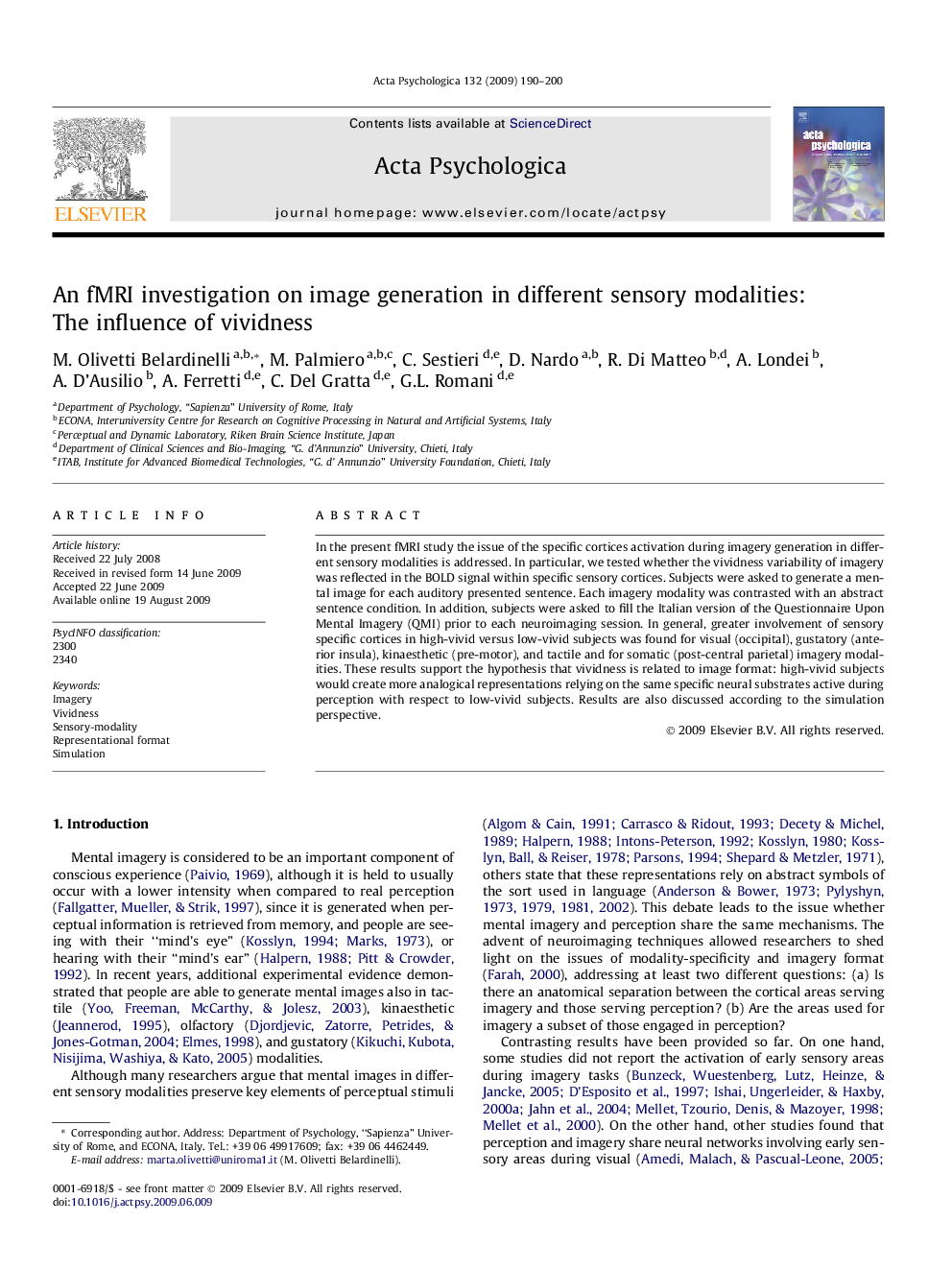| Article ID | Journal | Published Year | Pages | File Type |
|---|---|---|---|---|
| 920377 | Acta Psychologica | 2009 | 11 Pages |
In the present fMRI study the issue of the specific cortices activation during imagery generation in different sensory modalities is addressed. In particular, we tested whether the vividness variability of imagery was reflected in the BOLD signal within specific sensory cortices. Subjects were asked to generate a mental image for each auditory presented sentence. Each imagery modality was contrasted with an abstract sentence condition. In addition, subjects were asked to fill the Italian version of the Questionnaire Upon Mental Imagery (QMI) prior to each neuroimaging session. In general, greater involvement of sensory specific cortices in high-vivid versus low-vivid subjects was found for visual (occipital), gustatory (anterior insula), kinaesthetic (pre-motor), and tactile and for somatic (post-central parietal) imagery modalities. These results support the hypothesis that vividness is related to image format: high-vivid subjects would create more analogical representations relying on the same specific neural substrates active during perception with respect to low-vivid subjects. Results are also discussed according to the simulation perspective.
